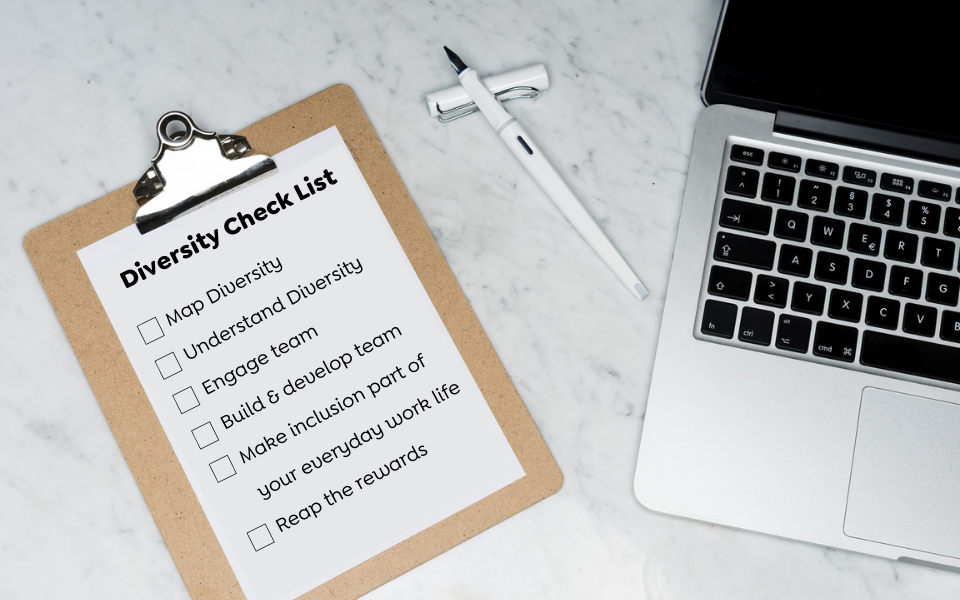
Understanding and embracing individual identity at work is more than simply fulfilling diversity requirements. It takes a nuanced approach as our Client Development and Cultural Identities Director Kevin Porter explains in this week’s blog.
“Our 2019 analysis finds that companies in the top quartile for gender diversity on executive teams were 25 percent more likely to have above-average profitability than companies in the fourth quartile—up from 21 percent in 2017 and 15 percent in 2014.”
McKinsey & Company 2020
For the past three decades organisations and companies around the globe have been looking inward, focussing on how they operate and trying to understand their workforce better in a sociocultural manner.
Diversity and Inclusion
This inward examination has led to the creation of a new area of responsibility within organisations known as diversity and inclusion (D&I). The terms ‘Diversity’ & ‘Inclusion’ have become global buzzwords, but what do they mean? Better still, what do we mean when we employ this very modern concept, and is it really as important as some are making it out to be?
A decade before the start of the new millennium around 75% of Fortune 1000 companies were turning their attention to the subject of diversity as the workforce became more heterogeneous and socioculturally diverse.
Companies were becoming aware that changes in the demographics of the workforce would require effective management plans to mitigate potentially undesirable consequences such changes could generate, especially in relation to productivity and competitiveness.
Understanding of diversity
As diversity became a focus of management, it was addressed from different understandings. Some companies targeted recruitment initiatives, education and training programs hopeful of increasing and retaining workforce diversity, while others, becoming aware of the importance of identity at work and inclusion alongside diversity, tried an even broader series of initiatives such as employee engagement, inclusive communication strategies and community engagement.
The depth and complexity of diversity within organisations, or the lack of it was becoming clear.
Once companies turned the spotlight onto identity at work and started to examine the concept in greater detail they soon discovered the ‘diversity’ within diversity.
Defining identity at work
There were the most obvious forms, such as, ‘ethnic’, ‘age’ and ‘gender diversity’, but there were also other forms that weren’t as obvious, such as, ‘religious’, ‘linguistic’, ‘educational’, ‘professional’, ‘sociocultural’ and ‘sexual diversity’, (which in no way exhausts the list).
Cultural and social identities and backgrounds were now starting to be viewed as important by company executives and understanding them became vital if businesses wished to remain competitive. It quickly became apparent that having a diverse workforce doesn’t guarantee better performance or greater motivation.
Diversity on its own can also be the cause of great disruption and dysfunction if there is no common ground between the individual members of the group or team.
Diversity becomes an asset when the members of the various groups can communicate and cooperate effectively with each other and across teams.
The value of inclusion
The question then becomes how do you get diverse people to work together effectively and be productive at the same time? The answer is inclusion.
Inclusion embraces employees within a company culture, irrespective of socio-cultural identity or background. All employees are offered equal access to information and professional development and are actively taught how to be a functioning member of that culture.
There are a host of concepts linked to diversity and inclusion that have to be considered to create effective inclusion strategies. Despite some claims, there is no one size fits all solution. Strategies will differ from group to group and from company to company. While strategies must be tailored,
the concepts to be considered remain the same. Concepts such as ‘culture’, ‘trust’, ‘risk’, ‘reciprocity’, ‘motivation’ and ‘productivity’ have to be taken into consideration when trying to create inclusion strategies because they are affected by culture, gender, age and social class etc.
Motivation in the workplace
Motivation, for example, is created both intrinsically and extrinsically and is shaped by age, gender, culture, social class, education, values and personality. Diversity and inclusion managers and professionals need to understand that motivations have to be considered on numerous different levels. Team members have to be motivated with self determination to complete their tasks, to collaborate with others within and outside the group and to buy into and participate in the company culture.
To successfully address the multiple layers and apply successful workforce strategies requires interested, enthusiastic and educated diversity and inclusion professionals.
The evidence for inclusion
During the past 30 years the professional field of diversity and inclusion has shifted its focus due to an increased knowledge and understanding of the subject area. What was originally formed to counter any possible negative effects a demographically diverse workforce might have on motivation and productivity has slowly evolved to embrace the value and benefits of having socio-culturally diverse teams.
Studies conducted by anthropologists in the US examining the effects of diversity and inclusion have noted that diverse teams produce better science, are more creative and are better equipped to solve a variety of problems.. They also argue that more diverse teams are better at anticipating, recognising and navigating a broader range of social and political issues, which can help to maintain harmony and cooperation.
These findings tie back into the quote that was used at the beginning of this article which was taken from a McKinsey & Company report into diversity and inclusion dating from 2020. The growing importance of identity at work can be seen in the way that large corporates such as McKinsey & Company and Deloitte have included D&I to their portfolio of interests and services, and it has spurred on companies like the one I work for, Cultural Infusion, to create Diversity Atlas, which allows businesses to measure and reveal actual diversity, and find new more effective ways to unlock its potential.
Diversity and inclusion have become socially, culturally and economically vital to the health of any business or organisation.
Have you ticked your boxes?
Share this Post